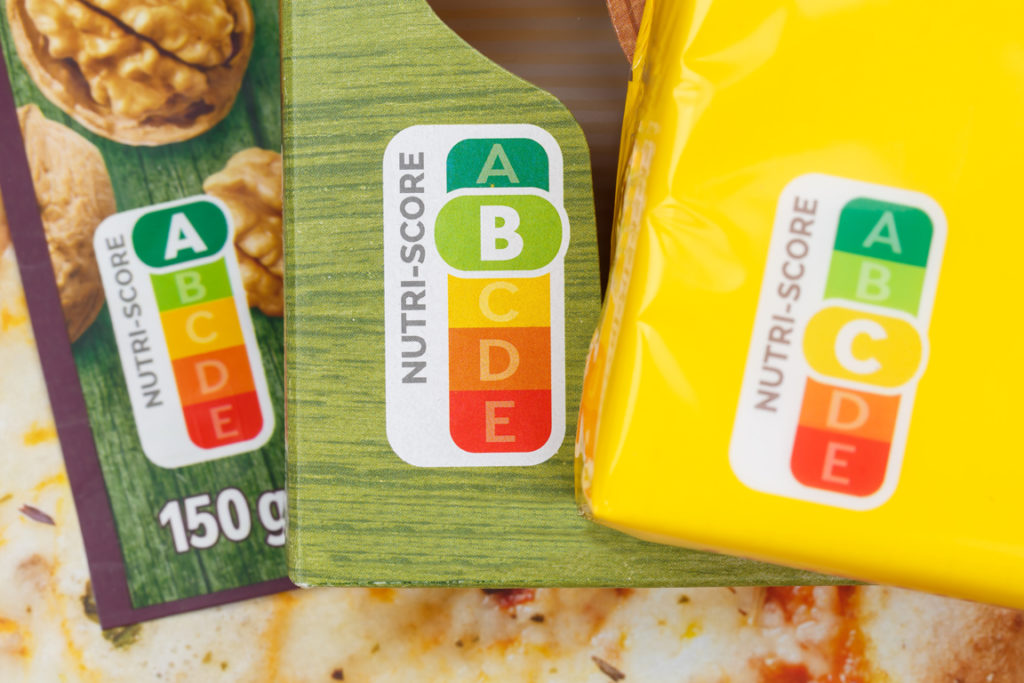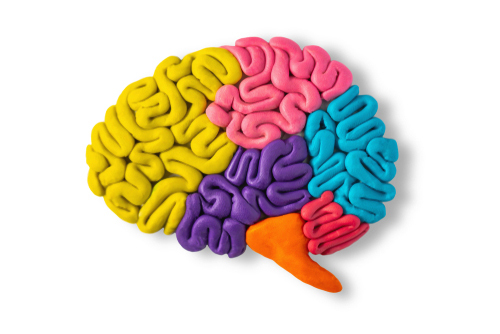Inkjet Labels, Color label printing
Color Speaks: Harnessing the Power of Color Labels
Beyond Aesthetics: The Strategic Impact of Color Labels on Market Success
Color labels do more than simply adorn packaging; they play a fundamental role in the marketing landscape, serving as key drivers for brand recognition and consumer decision-making. The strategic incorporation of color into product labeling transcends mere visual appeal, tapping into the deep-seated psychology of consumer behavior and setting the stage for competitive differentiation. Through their application, color labels wield the power to shape consumer perceptions, influence purchasing decisions, and foster a profound connection between products and their audience. As we explore the diverse functions and impacts of color labels across various sectors, it becomes clear that their role in marketing strategies is not just supplementary but essential, offering a bridge between brands and consumers in the ever-evolving marketplace.
The Psychology of Color in Marketing
The influence of color on the human psyche is profound, serving as a key element of consumer behavior and marketing strategies. Its capacity to evoke emotions, convey critical messages, and catalyze actions is integral to the decision-making process, influencing how brands are perceived and products are received. Strategic color choices can significantly impact brand recognition, with studies indicating a strong preference among consumers for brands that utilize distinctive and memorable hues. This preference underscores the importance of color in setting a brand apart in a competitive landscape, where the right color choice can be a powerful differentiator.
Through the strategic deployment of color, brands can enhance their appeal, communicate key messages, and influence consumer decisions. The selection of colors is not merely an aesthetic consideration but a strategic marketing decision that can significantly impact a brand’s visibility, perception, and success in the marketplace.
Advantages of Color Labels in Product Packaging
Building on the notion that color selection transcends aesthetic appeal to become a strategic marketing decision, it’s clear that the advantages of color labels in product packaging are manifold. By thoughtfully deploying color in their labeling strategies, brands not only bolster their market appeal but also unlock a spectrum of benefits that enhance consumer interaction, operational efficiency, and environmental responsibility. These benefits, outlined below, underscore the tangible impact that color labels can have on a brand’s visibility, consumer perception, and overall market success.
- Brand Recognition: The strategic use of color in labels can significantly elevate a brand’s visibility and recall among consumers. The concept of a “signature color” can boost brand recognition by up to 80%, serving as a visual shorthand that consumers associate with the quality and values of the brand. This instant recognition is crucial in crowded markets where differentiation is key to capturing consumer attention.
- Information Comprehension: Adding color to product labels enhances the legibility and comprehension of information, transforming the consumer experience. Color coding can guide consumers to essential details, improving their understanding and satisfaction with the product. This is particularly relevant for products requiring instructions or extensive information, where color can demarcate sections and highlight critical points, reducing confusion and enhancing user experience.
- Attention Capturing: In the competitive retail environment, capturing the consumer’s eye is the first step towards making a sale. Color labels are far more likely to draw attention than their monochromatic counterparts, making products stand out on shelves. This visual distinction is not merely aesthetic; it serves a functional purpose by directing consumers’ attention to important information, such as promotions, safety warnings, or unique selling points, thereby facilitating informed purchasing decisions.
- Production Efficiency and Flexibility: The advent of in-house color label printing has revolutionized the packaging process, offering brands unparalleled flexibility and efficiency. This capability allows for immediate response to market demands, customization for small batches, and significant cost savings on inventory and wastage. The ability to print exactly what is needed, when it is needed, supports a lean production approach and minimizes the risk of obsolescence.
- Eco-Friendly Options: The growing consumer demand for sustainable products extends to packaging, with an increasing number of companies opting for eco-friendly label materials and inks. These sustainable practices not only resonate with environmentally conscious consumers but also contribute to a brand’s overall reputation for corporate responsibility. The choice of green materials can reinforce a brand’s commitment to sustainability, enhancing consumer trust and loyalty.
Through the strategic use of color, labels become a dynamic interface between the product and the consumer, playing a pivotal role in marketing strategies aimed at capturing attention, conveying information, and fostering brand loyalty.
Color Labels Across Industries
The integration of color label printing across various industries exemplifies its pivotal role in enhancing brand visibility, operational efficiency, safety, and consumer engagement. This versatile application of color labels demonstrates their capacity to meet diverse industry needs, from attracting consumer attention in retail settings to ensuring safety in healthcare environments. Here’s an expanded view of how color label printing is leveraged across different sectors, illustrating its versatility and impact.
- Retail: In the competitive landscape of retail, color labels act as visual magnets that draw consumers’ attention to products on crowded shelves. For instance, cosmetics brands often employ vibrant and distinctive color labels to reflect the essence and quality of their products, making them stand out. A skincare product with a soft, pastel label can convey gentleness or natural ingredients, appealing to consumers seeking soothing care. Conversely, high-energy neon labels on sports drinks can attract fitness enthusiasts looking for an energy boost. The strategic application of color labels in retail not only enhances shelf appeal but also communicates brand values and product characteristics at first glance.
- Healthcare: The healthcare industry’s reliance on color labels is a testament to their importance in ensuring patient safety and streamlining care processes. A hospital might use color-coded labels to distinguish between different wards or patient care requirements, such as blue labels for diabetic care products and orange labels for allergen-free patient meals. This system simplifies the task for healthcare providers, reducing the risk of errors and improving the efficiency of care delivery. Additionally, pharmaceutical companies utilize color labels to differentiate drug classes, enabling pharmacists and patients to easily identify medications, thereby minimizing the risk of medication errors.
- Food and Beverage: In this industry, color label printing plays a crucial role in communicating product information and enhancing brand recognition. A craft beer company, for example, might use a range of color labels to differentiate its beer types, with amber labels for ales and green labels for lagers, aiding consumers in navigating their choices. Organic food products often feature green labels, resonating with consumers’ perceptions of natural and healthy offerings. Moreover, color labels indicating gluten-free or vegan options cater to specific dietary preferences, ensuring that relevant information is immediately visible to consumers.
- Manufacturing and Logistics: The use of color labels in the manufacturing and logistics sectors significantly enhances operational efficiency and safety. In a warehouse, color-coded labels can indicate product categories, making inventory management more intuitive. For instance, blue labels could be used for electrical components, while yellow labels might denote safety equipment, facilitating quick identification and reducing picking errors. Similarly, in logistics, color labels can expedite the sorting and shipping process, with colors assigned to different destinations or priority levels, streamlining operations and improving service delivery.
Through the strategic deployment of color label printing, industries can achieve various objectives, from bolstering brand identity and consumer engagement in retail to enhancing patient safety in healthcare. The examples provided underscore the transformative power of color labels, making them an indispensable tool in the marketing and operational strategies of diverse sectors. This adaptability and effectiveness of color labels underscore their significance in the contemporary business landscape, where visual communication and efficiency are paramount.
Selecting the Right Color and Material for Your Labels
Understanding Color Psychology in Label Design
Color choice is paramount in label design, as each hue can evoke different emotions and associations in your audience. It’s essential to understand the psychology behind colors and how they align with your brand’s messaging and values. For instance:
- Blue is often associated with trust, security, and calmness, making it a popular choice for financial services, technology, and health products.
- Red evokes excitement, passion, and urgency, perfect for attention-grabbing promotions or food products that benefit from perceived warmth and energy.
- Green suggests health, freshness, and sustainability, ideal for organic or eco-friendly products.
- Yellow and orange, with their bright and energetic vibes, can stimulate appetite, creativity, and optimism, suitable for children’s products, creative tools, and food items.
Incorporating these psychological insights into your color label printing strategy can significantly enhance the connection between your product and its intended market.
Selecting the Right Material for Durability and Appeal
The material of your label not only contributes to the tactile experience of your product but also ensures the durability of your branding in various conditions. Considerations include:
- Outdoor products require UV-resistant labels that can withstand exposure to sunlight without fading. Materials like polyester and vinyl offer excellent durability against weather elements.
- Beauty and healthcare products often encounter moisture and oils, necessitating water-resistant labels that maintain their integrity and appearance despite frequent handling.
- Food and beverage items might need labels that adhere to irregular surfaces or can endure refrigeration or freezing temperatures. Special adhesives and materials that resist moisture are critical for these applications.
The choice of label material impacts not only the product’s shelf appeal but also its usability and lifespan, making it a vital aspect of the product design and marketing strategy.
Considering Adhesive Properties for Versatile Applications
The functionality of a label is as important as its design. Selecting the appropriate adhesive ensures your labels remain in place under the intended use conditions while also considering ease of removal if necessary:
- Permanent adhesives offer strong bonding for products that are not intended to be relabeled or where long-term durability is essential.
- Removable adhesives are suitable for products that may require label updates, such as promotional items or reusable packaging, allowing for easy label replacement without residue.
- Specialty adhesives are designed for specific challenges, such as low-temperature environments, direct food contact, or high-tack needs for difficult surfaces.
Integrating Brand Identity with Color and Material Selection
The cohesion between your brand identity and your label’s color and material choices cannot be overstressed. This alignment ensures a consistent brand message across all touchpoints, enhancing brand recognition and loyalty. Whether you aim to convey luxury with metallic finishes, eco-consciousness with recycled materials, or innovation with holographic elements, the coherence of your label’s design with your brand ethos plays a crucial role in your overall marketing effectiveness.
Final thougths
In today’s world, where catching a customer’s eye is everything, using color labels is like having a superpower for your products. It’s all about making your items pop on the shelf, getting important info across quickly, and showing off what your brand stands for, from being eco-friendly to high-tech. We’ve seen how using the right colors and materials can make a big difference, whether you’re selling drinks, makeup, gadgets, or anything else. It’s clear that putting some thought into your labels isn’t just about making things look good; it’s a smart move to help your products fly off the shelves.
If you’re thinking about stepping up your game with some top-notch label printing, Pacific Barcode is here to help. We’re all about giving you the best label printing solutions that fit exactly what your business needs. Whether you want your products to shout “buy me!” from the aisles or you need labels that can handle being in the fridge or outdoors, we’ve got your back. At Pacific Barcode, we’re not just about printing labels; we’re about bringing your brand to life and making sure it stands out in a crowded market. Dive into our world and see how we can make your products shine with the perfect labels.


